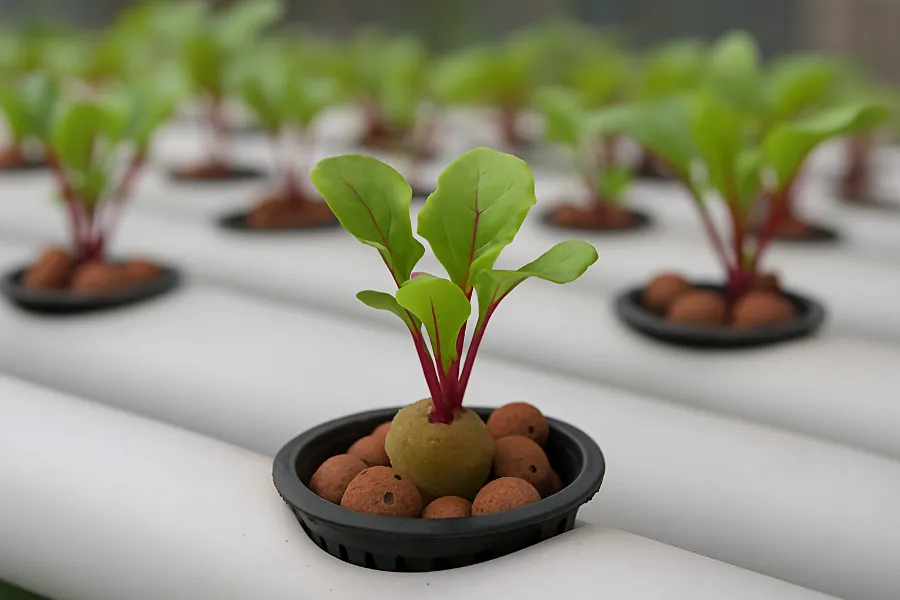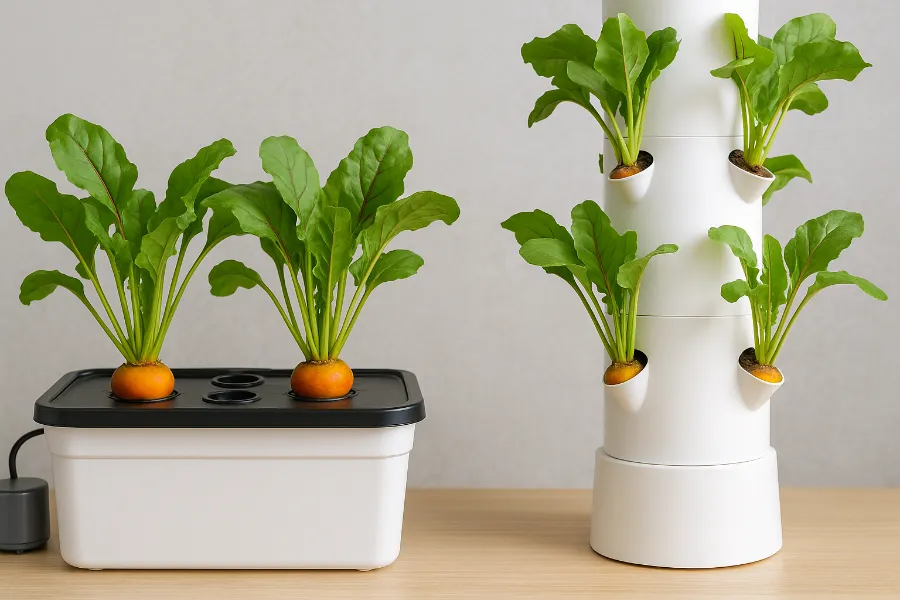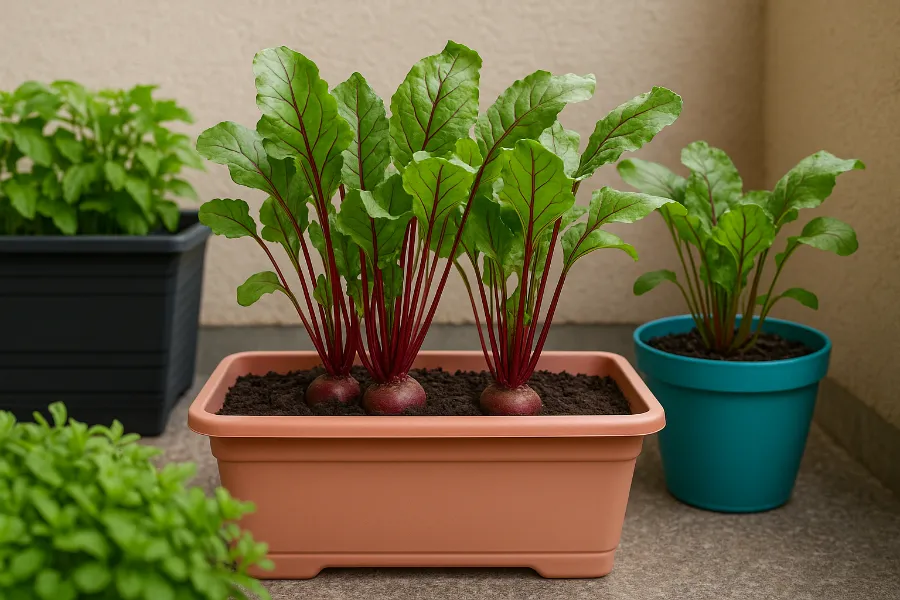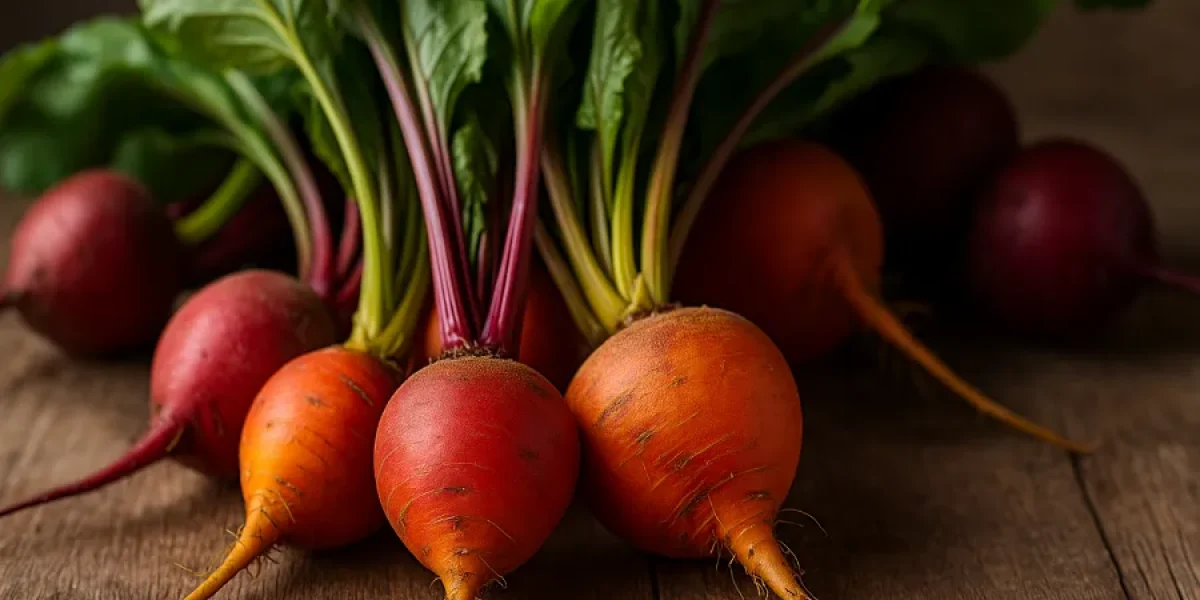If there’s one vegetable I never get tired of, it’s fresh beets. They’re earthy, sweet, colorful, and packed with nutrients—plus, they’re surprisingly easy to grow at home, even if you don’t have a traditional garden. Over the past few years, I’ve experimented with different growing methods, from simple soil setups to modern systems like hydroponics and aeroponics, and let me tell you—beets thrive in them. Today, I want to share what I’ve learned about how you can grow your own fresh beets, even in small spaces.
Grow Beets: Where It All Started
When I first decided to grow beets, I thought I needed a big backyard garden. I imagined rows of leafy greens sprouting out of the soil, ready for harvest. The truth? You don’t need acres of land. Beets are compact root vegetables, which makes them perfect for experimenting indoors or in small outdoor spots.
I started with classic soil gardening—loosening up a patch of dirt, planting seeds about an inch deep, and watering consistently. It worked, but as I moved into an apartment with limited outdoor space, I had to get creative. That’s when I started exploring small space gardening techniques like containers, hydroponics, and eventually aeroponics.

Hydroponic Beets: My First Soil-Free Experiment
One of the most exciting discoveries in my gardening journey was growing hydroponic beets. The idea of raising vegetables without soil sounded futuristic at first, but once I tried it, I was hooked.
Here’s how I set it up:
- I germinated beet seeds in Rockwool cubes until tiny sprouts appeared.
- Then, I placed them in a simple Deep Water Culture system with net pots and clay pebbles.
- The roots grew down into a nutrient-rich water solution, while the leafy greens stretched toward my grow light.
The results? My beets grew faster than they ever did in soil. They were cleaner (no mud to scrub off!), and the flavor was incredibly sweet. Hydroponics gave me control over nutrients, pH, and water—making it an efficient way to grow food indoors.
Small Space Gardening: Why Beets Are Perfect for It
I know a lot of people think you need a backyard to garden, but small space gardening is proof that anyone can grow food. Beets are especially well-suited because they don’t need much room to produce a satisfying harvest.
In my tiny apartment, I used:
- Balcony planters for a few soil-based beets.
- Hydroponic buckets tucked into a kitchen corner.
- A compact aeroponic tower near the window for leafy beet greens and roots.
What I love most about growing fresh beets in small spaces is how quickly they reward you. In just 40 days, you can start harvesting baby beets for salads. And if you let them go longer, you’ll have larger, sweeter roots in about 60 days.
Hydroponics: A Game-Changer for Root Vegetables
Let’s pause here and talk about hydroponics as a whole. If you’ve never tried it, hydroponics is essentially a way to grow plants without soil. Instead, you use water mixed with nutrients to feed your crops.
For root vegetables like beets, it has huge advantages:
- Faster growth because nutrients are delivered directly to roots.
- Cleaner harvests, since there’s no dirt to shake off.
- Year-round growing indoors with grow lights.
- Eco-friendly because water is reused in the system.
Hydroponics may sound complicated, but trust me—it’s not. You can start with a simple setup made from a 5-gallon bucket, a few net pots, and an aquarium air pump. That’s how I grew my first batch of hydroponic beets, and they turned out beautifully.
Aeroponics: Taking Beets to the Next Level
After getting comfortable with hydroponics, I decided to experiment with aeroponics. Unlike hydroponics, where roots sit in water, aeroponics suspends roots in the air and mists them with a nutrient solution.
The first time I tried growing aeroponic beets, I was amazed at how quickly they developed. Because the roots were exposed to more oxygen, they grew strong and healthy, and the beets themselves were incredibly tender.
Setting up aeroponics at home was a bit more advanced, but there are home-friendly systems available now, like vertical towers. They don’t take up much space, which makes them perfect for apartments. If you’re serious about small space gardening, aeroponics is worth exploring.
Root Vegetables: Why Beets Lead the Pack
I’ve grown other root vegetables—carrots, radishes, even turnips—but fresh beets remain my favorite. Why?
- They grow quickly compared to carrots.
- You get a double harvest: roots and leafy greens.
- They’re nutrient-dense, giving you a health boost with every bite.
- They adapt well to both hydroponics and aeroponics.
If you want to dip your toes into growing root vegetables in a modern way, start with beets. They’re forgiving, delicious, and rewarding.

Aeroponic Beets vs Hydroponic Beets
Now that I’ve tried both methods, people often ask me which is better: aeroponic beets or hydroponic beets? Honestly, it depends on your goals.
- Hydroponic beets are simpler to set up and maintain, making them great for beginners.
- Aeroponic beets grow faster and use even less water, but the systems are usually more expensive.
If you’re new to soil-free gardening, start with hydroponics. Once you’re confident, experiment with aeroponics—you might be surprised by how much you can grow in such a small footprint.
Cooking with Fresh Beets
Growing beets is only half the fun—the other half is eating them. Freshly harvested beets taste so much better than store-bought. Here are a few ways I use mine:
- Beet salads – Toss roasted beets with goat cheese, arugula, and walnuts.
- Smoothies & juices – Blend raw beets with carrots, apples, and ginger.
- Roasted beets – A simple side dish with olive oil, salt, and herbs.
- Sautéed greens – Don’t forget the leaves! Beet greens are delicious sautéed with garlic.
When I harvest fresh beets from my hydroponic or aeroponic system and eat them the same day, the flavor is unmatched.

Final Thoughts: Fresh Beets in Any Space
If there’s one thing my journey has taught me, it’s that fresh beets aren’t just for people with big gardens. Whether you want to grow beets in traditional soil, try hydroponic beets in a bucket, or experiment with aeroponic beets in a vertical tower, the possibilities are endless.
Beets are adaptable, delicious, and rewarding. They’re the perfect crop for small space gardening, and once you taste your first homegrown harvest, you’ll understand why I keep growing them year after year.
So go ahead—set up that system, plant those seeds, and get ready to enjoy the earthy sweetness of fresh beets grown right in your own home.













